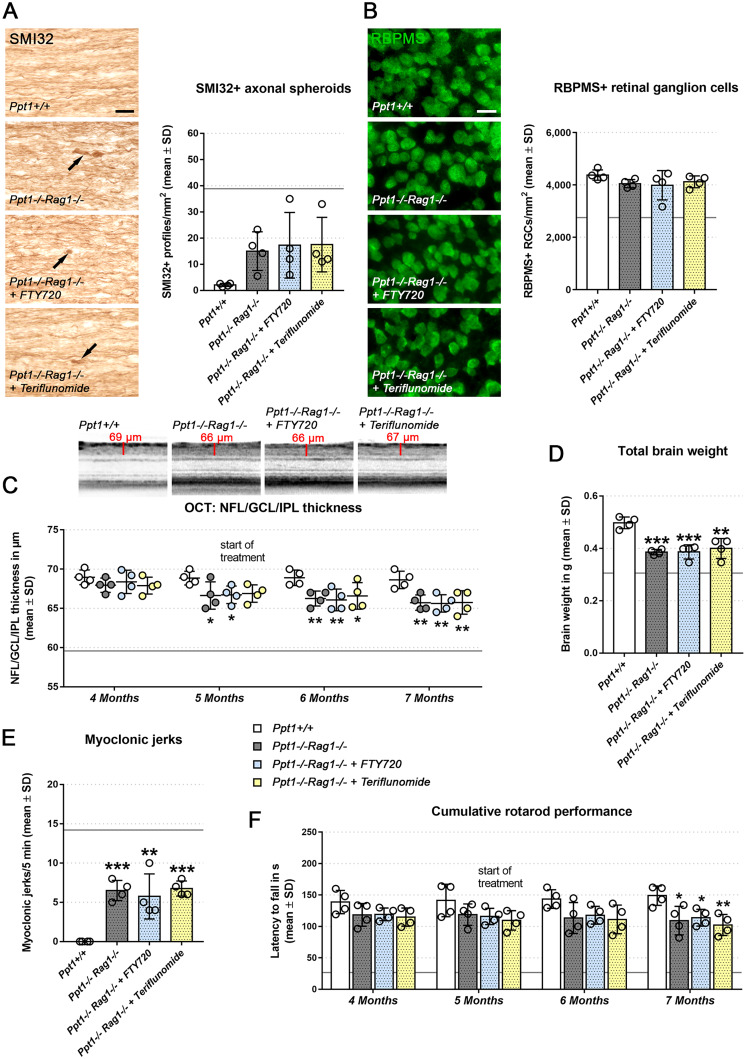Figure 4.
Treatment effects of fingolimod and teriflunomide are predominantly immunomodulatory. (A) Representative light microscopy and quantification of SMI32+ axonal spheroids in optic nerves and (B), immune fluorescence microscopy and quantification of RBPMS+ retinal ganglion cells in retinae from 7-month-old Ppt1+/+, Ppt1−/−Rag1−/−, fingolimod-treated Ppt1−/−Rag1−/− (+ FTY720) and teriflunomide-treated Ppt1−/−Rag1−/− (+ Teriflunomide) mice (circle = mean value of one mouse; n = 4 mice per group, one-way ANOVA and Tukey’s post hoc test). Scale bars: 20 µm. (C) Representative peripapillary OCT circle scans at 7 months and longitudinal analysis of NFL/GCL/IPL thickness (n = 4 mice per group, one-way ANOVA and Tukey’s post hoc test). (D) Total brain weights of 7-month-old Ppt1+/+, Ppt1−/−Rag1−/−, fingolimod-treated Ppt1−/−Rag1−/− and teriflunomide-treated Ppt1−/−Rag1−/− mice (n = 4 mice per group, one-way ANOVA and Tukey’s post hoc test). (E) Quantification of myoclonic jerks in 7-month-old Ppt1+/+, Ppt1−/−Rag1−/−, fingolimod-treated Ppt1−/−Rag1−/− and teriflunomide-treated Ppt1−/−Rag1−/− mice (circle = mean value of one mouse; n = 4 mice per group, one-way ANOVA and Tukey’s post hoc test). (F) Longitudinal analysis of cumulative Rotarod performance (circle = mean value of five consecutive runs of one mouse n = 4 mice per group, two-way ANOVA and Tukey’s post hoc test). Note that none of the investigated parameters was further improved by either of the immunomodulators in comparison to untreated Ppt1−/−Rag1−/− mice. Grey horizontal lines in all graphs indicate mean values of immune competent Ppt1−/−Rag1+/+ mice. *P < 0.05, **P < 0.01, ***P < 0.001.

